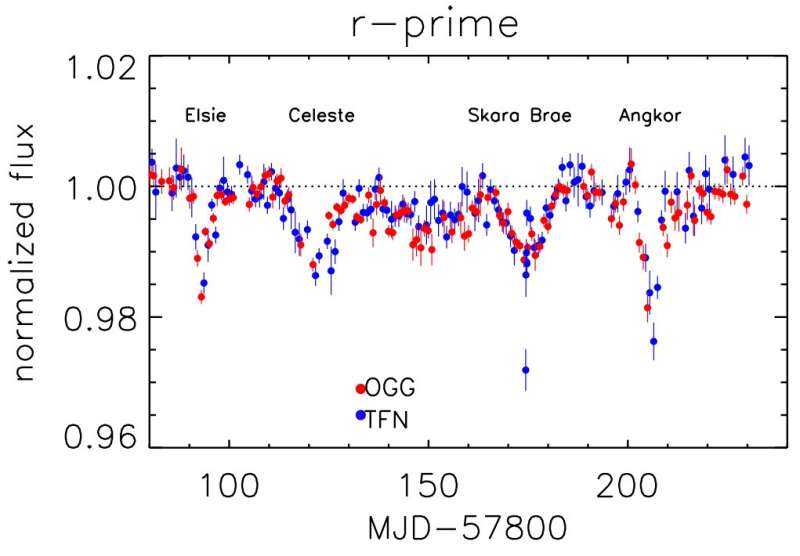News about Tabby's star, the most mysterious star of 2017

KIC 8462852, or "Tabby's Star," named after Tabetha Boyajian, the researcher at Louisiana State University (USA) who is leading its study, is a medium sized star, some 50 percent bigger than the sun, and 1,000 degrees hotter, at a distance of around 1000 light years. However, its brightness rises and falls sporadically, without explanation. Many theories have been proposed to explain the unusual light curve of the star, including the existence of an alien mega-structure orbiting around it.
Tabby's star, in the constellation of Cygnus, was observed by telescopes around the world in 2017, including the Gran Telescopio Canarias (GTC), the Mercator Telescope, the Nordic Optical Telescope (NOT) and the Telescopio Nazionale Galileo (TNG), all of them at the Roque de los Muchachos Observatory (Garafía, La Palma), and the network of telescopes of the Las Cumbres Observatory (LC0) group. As a result, astronomers have produced a new dataset, which is presented today in two articles, one by a large team led by Tabetha Boyajian, and the other led by Hans Deeg, a researcher at the IAC/ULL.
"Since the discovery of Tabby's star using data which extend over five years' observations, we are finally in a position to present new, convincing ideas about the nature of this strange object," says Hans Deeg.
Scientists have been observing this star closely with the telescopes of the Las Cumbres Observatory from March 2016 through December 2017. In May of last year, when a team led by the researcher Marian Martínez observed it with the Mercator telescope, the LCO network detected the beginning of a 1 percent reduction in the brightness of the star over a few days. Following these observations, follow-up of observations of the star were conducted with high-resolution spectroscopy using NOT and TNG in addition to Mercator, involving several researchers from groups specializing in fields as diverse as solar physics, massive star physics and exoplanets.
In parallel, the team led by Hans Deeg was prepared to observe it with the 10m GTC, awaiting the moment when Tabby's star "woke up." Using the OSIRIS instrument on the GTC, they measured the colour of the star with high precision throughout episodes of dimming during 2017. It is very likely that interstellar dust causes the light from the star to dim and brighten. The new data show that the colours in the light are being attenuated differently. "For this reason," says Roi Alonso, a researcher at the IAC/ULL and another of the authors, "we know that the material which is interposed between us and the star is not opaque, as would be expected if it were a planet, or an alien mega-structure."
However, the method used to study this star is leading the way to a new era in astronomy. Amateur astronomers, called "Planet Hunters," are among those sifting through huge quantities of data from NASA's Kepler mission. They detected the unusual behaviour of the star in 2015, years after the end of the mission in 2013.
However, not all the answers are known. At the present time, the teams observing on the GTC, as well as those around the world, are waiting for Tabby's star to wake up again, and show stronger dimming, from 10 percent to 20 percent as found in the observations from Kepler over five years ago. Although the present data support the hypothesis that the star is within a large dust cloud, which produces the attenuation, the researchers will continue studying the star's fluctuations.
More information: BOYAJIAN, Tabetha et al. "The First Post-Kepler Brightness Dips of KIC 8462852", The Astrophysical Journal Letters, preprint at arxiv.org/abs/1801.00732
DEEG, Hans et al. "Non-grey dimming events of KIC 8462852 from GTC spectrophotometry", Astronomy & Astrophysics Letters, preprint at arxiv.org/abs/1801.00720
Journal information: Astronomy & Astrophysics , Astrophysical Journal Letters
Provided by Instituto de Astrofísica de Canarias (IAC)





















